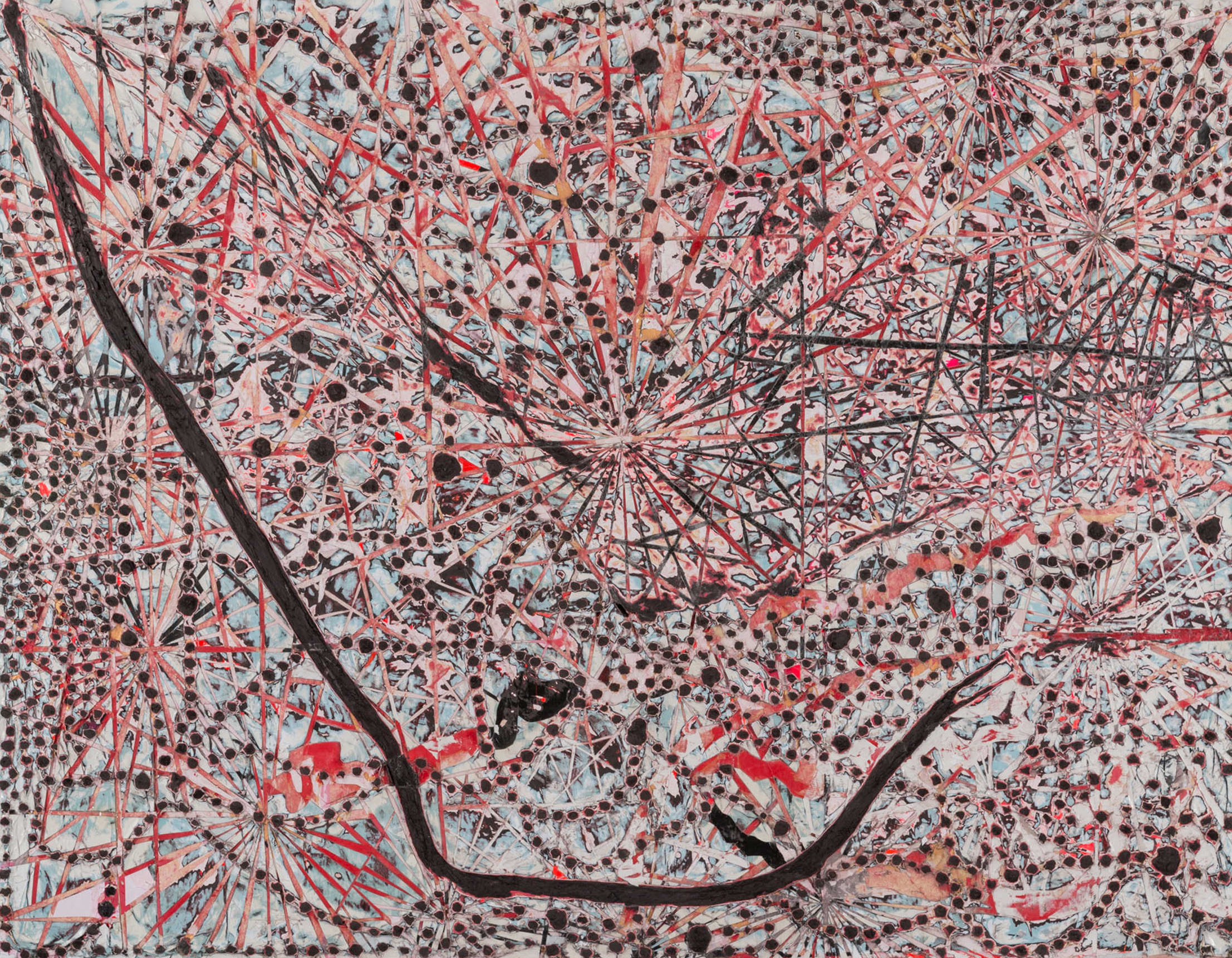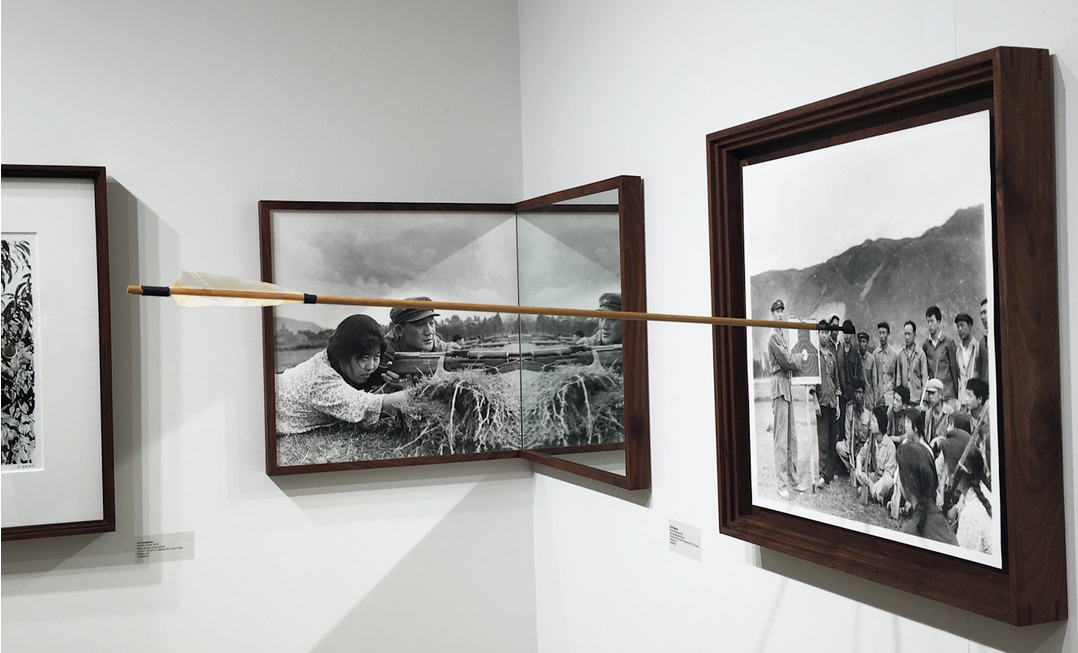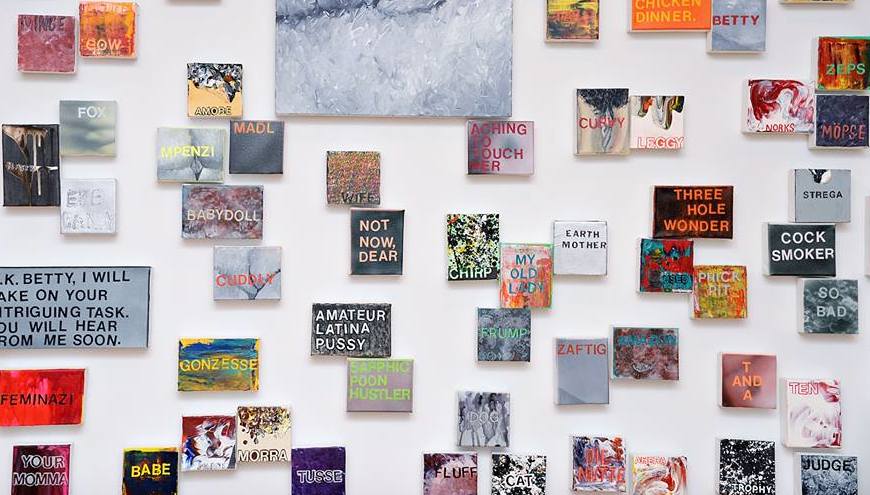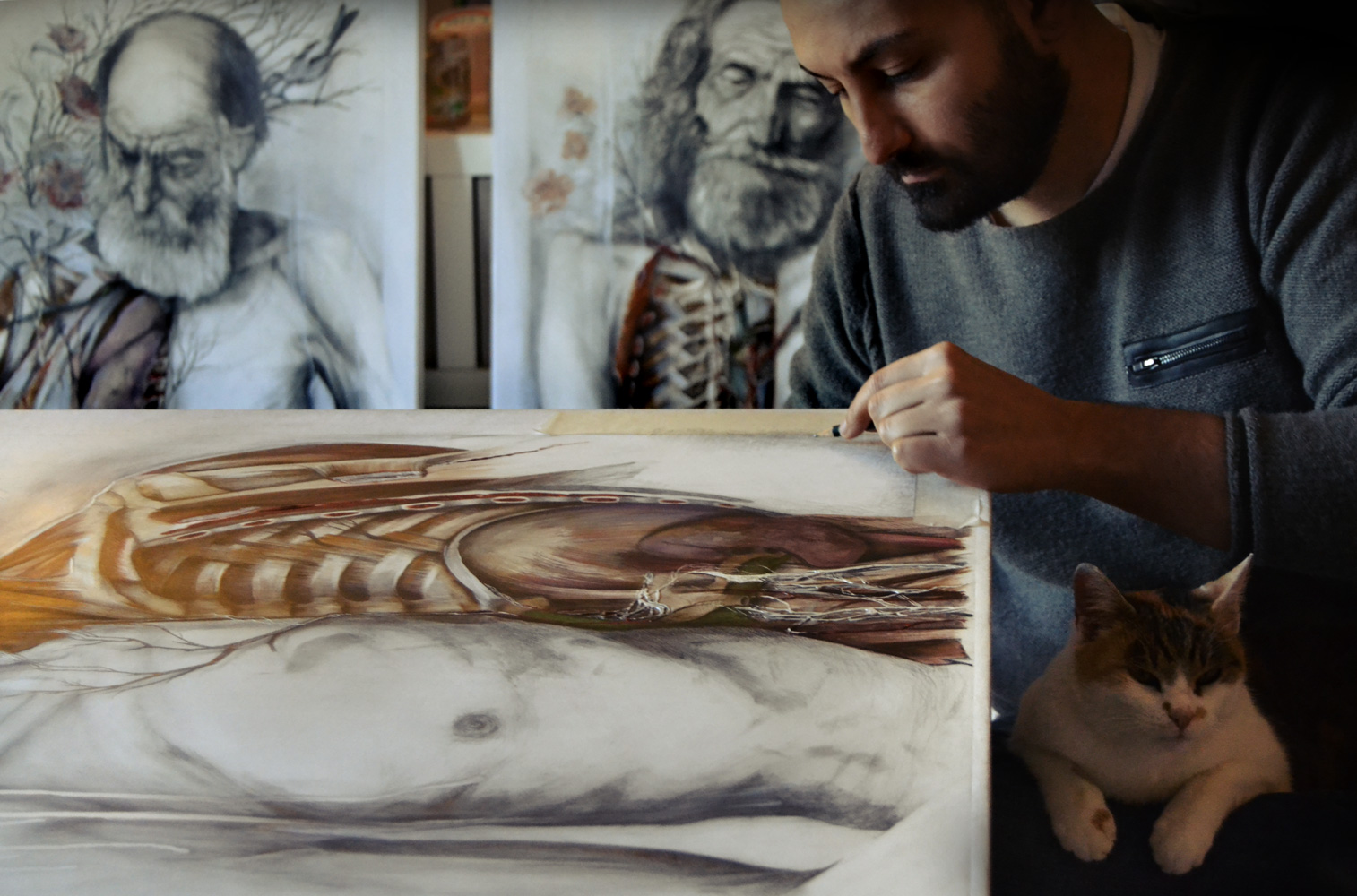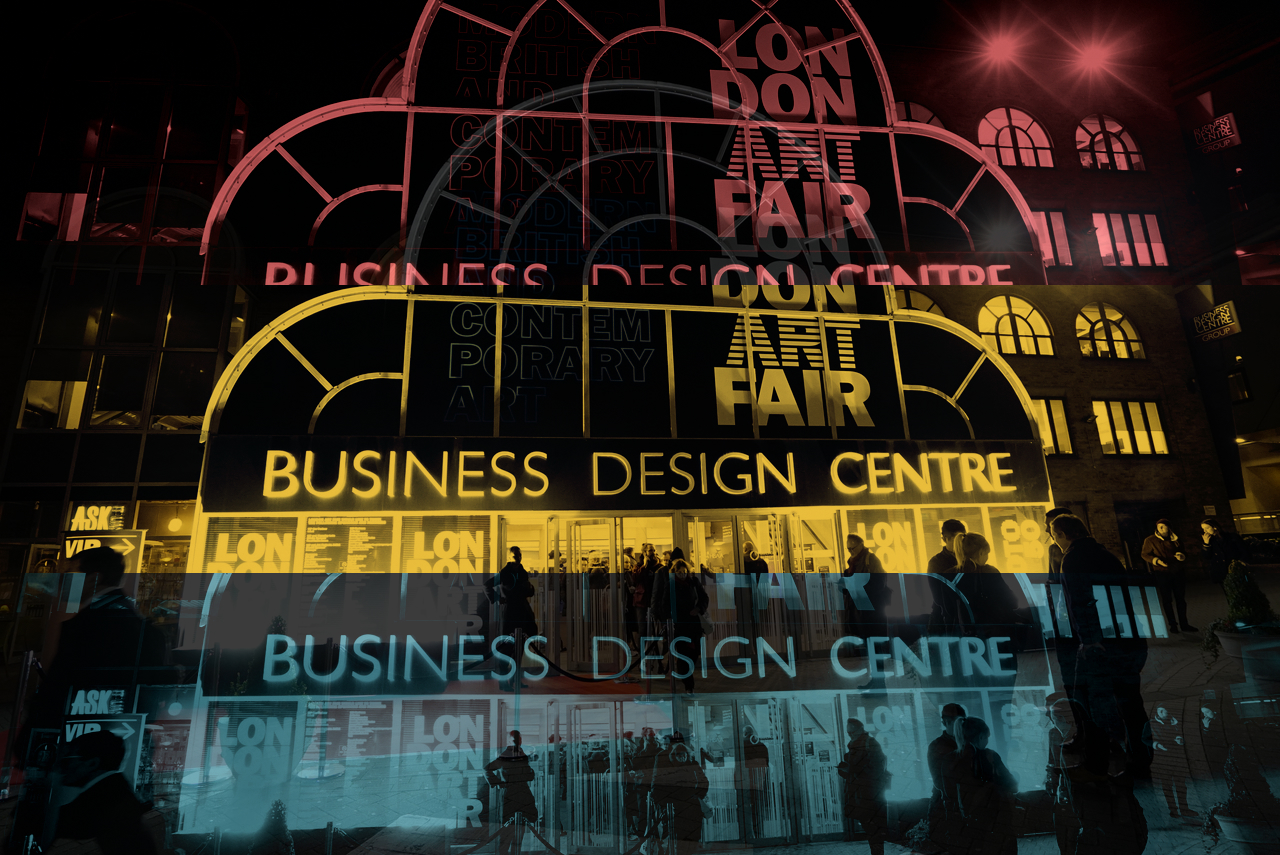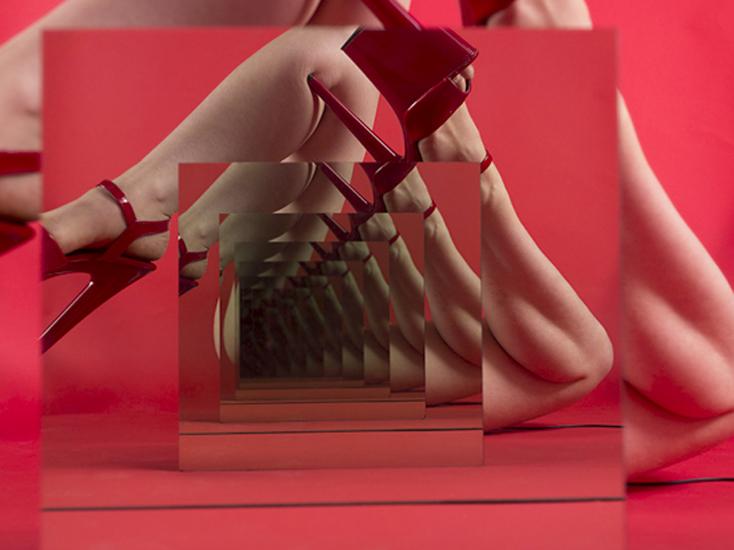After years of travel and critical acclaim, Mark Bradford, 53, is finally getting a solo museum show in his hometown of Los Angeles. “Scorched Earth” opened this week at The Hammer Museum, comprised of twelve paintings and an audio installation. The centerpiece of the show is the mural in the museum’s lobby: entitled “Finding Barry,” depicting a map of the United States with a number corresponding to each state. These figures point to the number of people out of 100,000 diagnosed with AIDS in 2009.
As a black, gay male, Bradford’s subject matter has come full circle since attending art school in the LA of the early 90s. This was an era plagued by social injustice, marred by the Rodney King trial, race riots, and some of the last and most violent throes of the AIDS epidemic. Remarkably little has changed since then; HIV/AIDS remains a threat and racial injustice has soared to new heights with the events of Ferguson and Baltimore. Many of the paintings in “Scorched Earth,” Bradford says, are based on what the HIV virus looks like under the microscope.
Bradford’s signature style is a sort of collage, a blending of paper and paint on canvas. The technique harkens back to his early days working at his mother’s hair salon, where he would collect scraps from her hair products to layer together and paint. Today his materials are culled from the urban landscape, incorporating telephone pole advertisements and graffitied plywood barricades. Though separated by a gulf of experience and history, something in his work recalls Simon Rodia’s Watts Towers, the iconic structures of recycled material that withstood two separate periods of violent riots in LA.
It’s about time that Bradford be given this level of recognition. His raw material is the very stuff of the city, his product the expression of an embattled time for the body and for race. Not enough has changed since the 90s and the Hammer has finally given Bradford the platform to tell his story, nearly 30 years in the making.
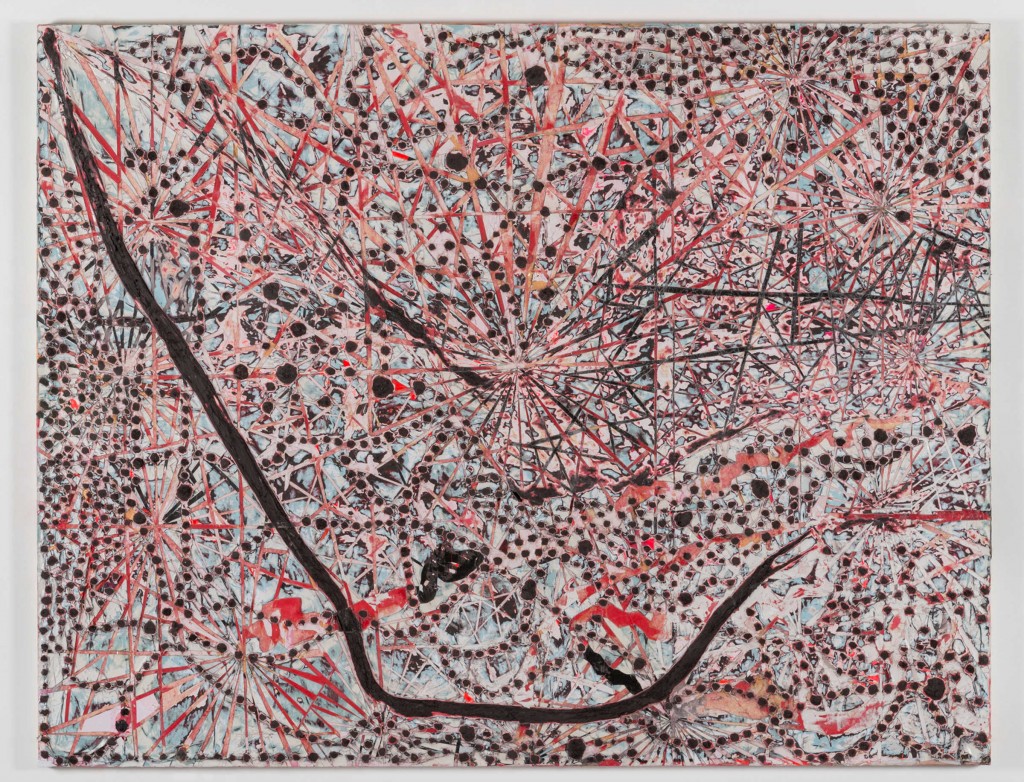
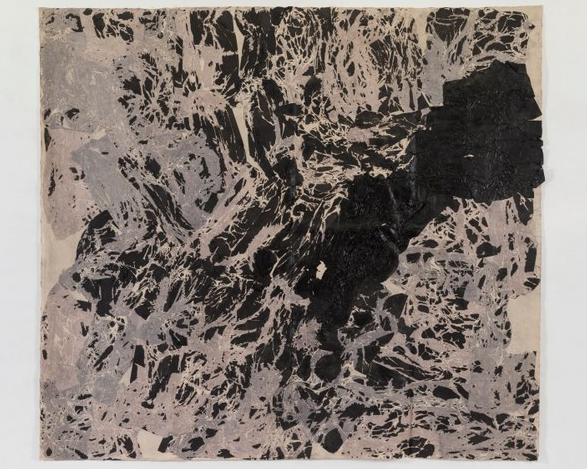
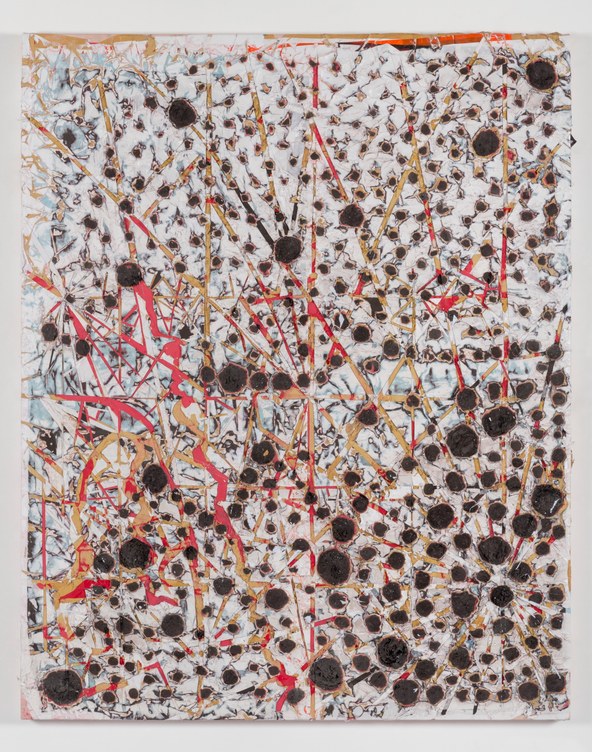
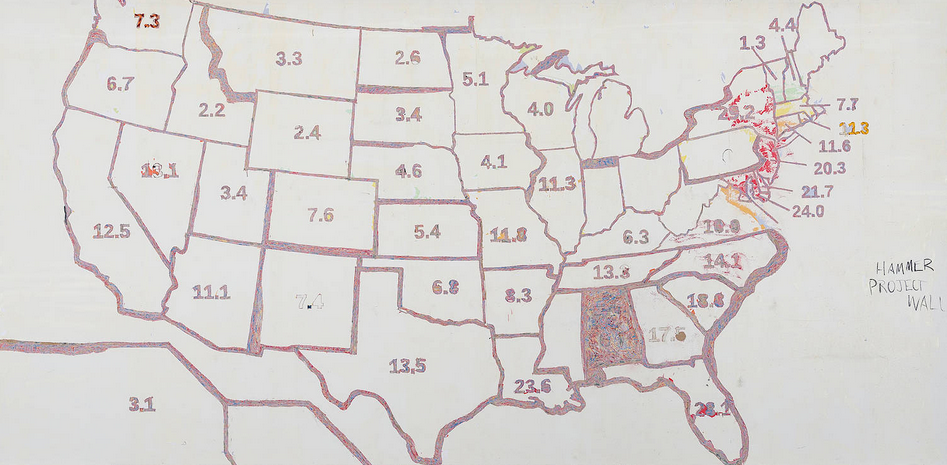
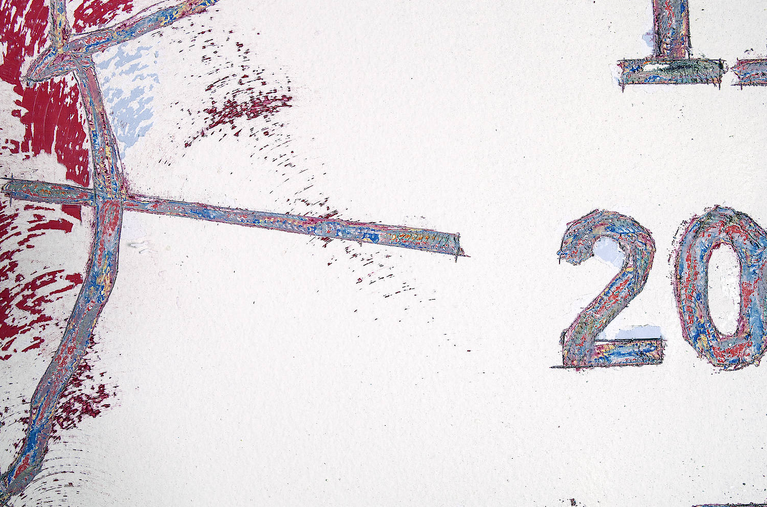
Bradford’s exhibit will be open to the public until September 27th at the Hammer Museum in LA.


